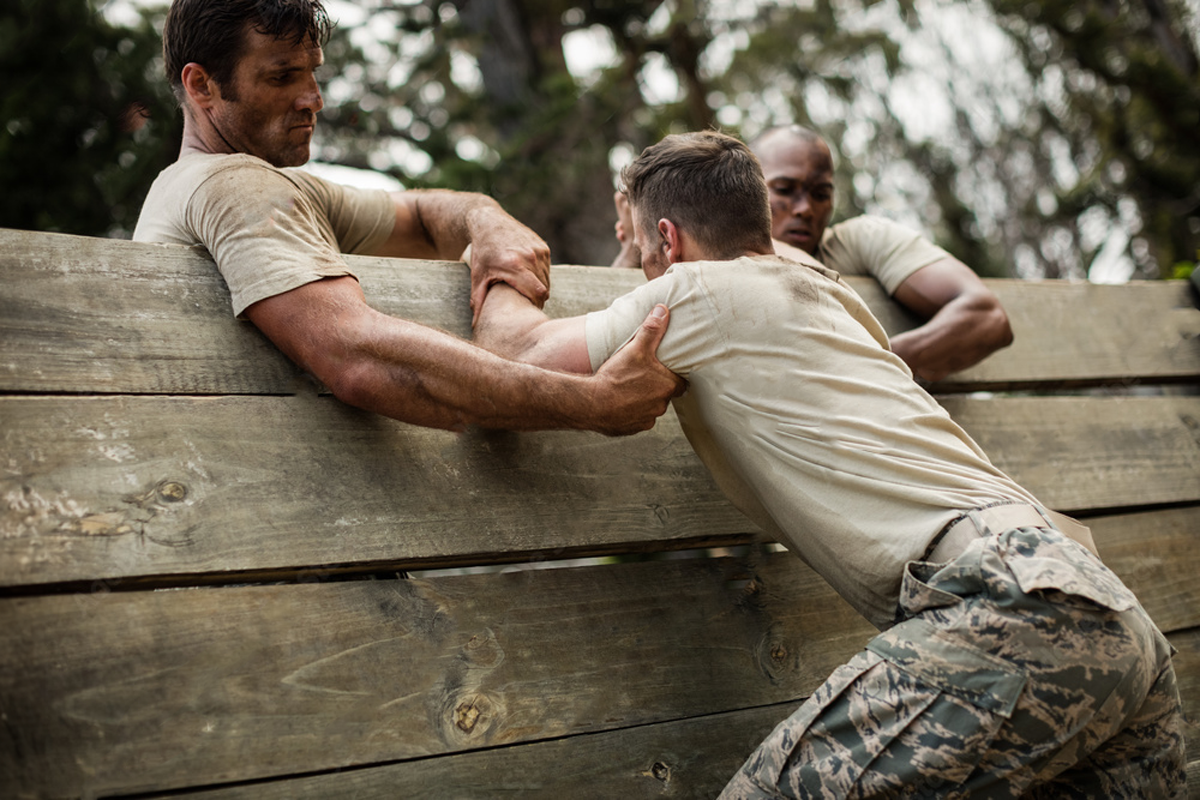
Resilience is a quality that enables individuals to bounce back from setbacks, adapt to change, and thrive under pressure. While resilience is often associated with military personnel, the truth is, anyone can benefit from learning the lessons taught in military training.
In this post, we explore the various aspects of resilience that can be learned from military training and how you can apply these lessons in your own life.
Mental Toughness in Military Training
Mental toughness is a critical skill taught in military training that enables soldiers to endure physically and mentally challenging situations.
It starts with positive self-talk. In military training, positive self-talk is more than just pep talks; it’s a powerful tool for building resilience. Soldiers learn to reframe negative thoughts into positive affirmations, such as “I can do this” or “I am strong,” which can help them stay focused and motivated even in the most challenging situations. This practice not only boosts their confidence but also helps them maintain a positive attitude in the face of adversity.
In addition, setting clear, achievable goals is a fundamental aspect of military training. Soldiers are taught to break down larger objectives into smaller, manageable tasks, allowing them to track their progress and stay motivated. This practice not only helps them stay on track during training but also gives them a sense of purpose and direction, which can be incredibly motivating, especially during tough times.
Last, but not least is visualization. Visualization is a powerful technique used in military training to help soldiers overcome obstacles and stay motivated. By visualizing themselves successfully completing a mission or overcoming a challenge, soldiers can mentally prepare themselves for the task ahead and build confidence in their abilities. This practice can be particularly useful during difficult training exercises or when facing daunting challenges, as it allows soldiers to envision success and stay motivated even when the going gets tough.
Adaptability in Military Training
Military training exposes soldiers to a wide range of environments, from urban settings to rugged terrains, and they must quickly adapt to each new setting. Whether they are conducting a mission in a desert, a jungle, or a snowy mountain, soldiers learn to acclimate themselves to their surroundings and adjust their tactics accordingly. This adaptability ensures that soldiers can perform effectively, regardless of the environment they find themselves in.
Military training scenarios are designed to challenge soldiers and push them out of their comfort zones. These challenges can range from simulated combat situations to logistical hurdles, requiring soldiers to think on their feet and adapt their strategies in real-time. By facing these unexpected challenges during training, soldiers learn to remain calm under pressure and find creative solutions to overcome obstacles, skills that are invaluable in both military operations and everyday life.
Teamwork and Camaraderie in Military Training
Teamwork and camaraderie are not just buzzwords in the military; they are foundational principles that are deeply ingrained in every soldier. Here’s a deeper dive into how military training emphasizes these qualities:
Military training places a strong emphasis on teamwork, recognizing that the ability to work effectively as part of a team is essential for mission success. Soldiers participate in a variety of team-building exercises, such as obstacle courses, where they must rely on each other to overcome challenges. These exercises not only improve communication and coordination among team members but also help build trust and camaraderie. Soldiers learn to leverage each other’s strengths and support each other’s weaknesses, creating a cohesive and effective team.
One of the most notable aspects of military training is the strong sense of camaraderie that develops among soldiers. From the moment they enter training, soldiers are taught the importance of looking out for one another and supporting each other through thick and thin. This sense of camaraderie extends beyond the training field and into the battlefield, where soldiers form bonds that can last a lifetime. This camaraderie not only enhances morale but also ensures that soldiers can rely on each other in the most challenging of circumstances, fostering a sense of unity and loyalty that is unparalleled.

Physical Fitness and Endurance in Military Training
Physical fitness is not just a requirement for soldiers; it is a way of life. Military training places a strong emphasis on physical fitness and endurance, recognizing that a strong and healthy body is essential for performing the demanding tasks required of soldiers. Here’s a closer look at how military training emphasizes physical fitness and endurance:
Boot camp is where the foundation of physical fitness is laid for soldiers. During boot camp, soldiers undergo rigorous physical training that includes running, calisthenics, and strength training. This intensive training not only builds strength and endurance but also instills discipline and mental toughness. Soldiers are pushed to their physical limits, teaching them to push through pain and fatigue, which is invaluable in the field.
Obstacle courses are a staple of military training and are designed to test soldiers’ physical and mental abilities. These courses often include climbing walls, crawling under barbed wire, and navigating through mud pits, requiring soldiers to use their strength, agility, and endurance to complete the course. Obstacle courses not only improve soldiers’ physical fitness but also teach them to think quickly and adapt to challenging situations, skills that are essential in combat.
The physical fitness gained in military training extends far beyond the training field. Soldiers who maintain a high level of physical fitness during their service are more likely to stay healthy and resilient throughout their lives. Physical fitness can also have a positive impact on mental health, reducing stress and anxiety. Additionally, the discipline and commitment to physical fitness learned in the military can translate to other areas of life, helping soldiers excel in their civilian careers.

Leadership and Followership in Military Training
Leadership and followership are not just roles assigned in the military; they are skills that every soldier must master. Military training focuses on developing these skills, recognizing that effective leadership and followership are essential for mission success. Here’s a closer look at how military training shapes leadership and followership:
Military training instills key leadership qualities in soldiers, such as decision-making, accountability, and integrity. Soldiers are taught to make decisions quickly and effectively, often under pressure, ensuring that they can lead their teams with confidence. Accountability is also emphasized, as soldiers learn that their actions have consequences and that they must take responsibility for their decisions. These leadership qualities are not only essential in military operations but also in civilian life, making military-trained individuals valuable leaders in any organization.
Knowing When to Lead and When to Follow
One of the most important lessons taught in military training is knowing when to lead and when to follow. Soldiers learn that effective leadership is not about always being in charge but about recognizing when someone else is better suited to lead. This humility and adaptability are crucial in a dynamic and fast-paced environment, where the ability to switch between leading and following can mean the difference between success and failure. By mastering both roles, soldiers become versatile and effective team members, capable of fulfilling any role required of them.
Conclusion
The lessons in resilience taught in military training are valuable for anyone looking to build their resilience and thrive in challenging situations. By adopting the principles of mental toughness, adaptability, teamwork, physical fitness, leadership, and followership, you can develop the resilience needed to overcome life’s obstacles and achieve your goals.





